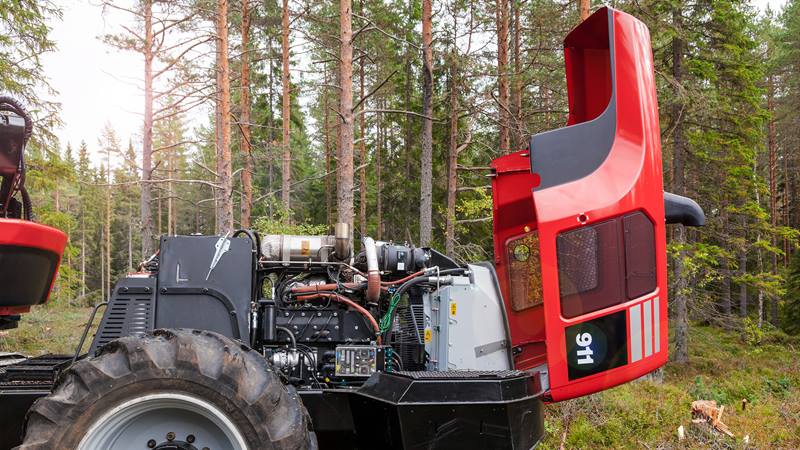
Choice of emission control
The Engine and the Forest
The environmental requirements of emission legislation in the EU and the USA have led to the development of two different types of emission control technologies: CEGR and SCR. In the two films here we take a look at how each technology works and how they fulfill the needs of modern forestry. A little further down the page you can also see which engine technology each machine manufacturer has chosen, for harvesters, forwarders, and trucks.
How has the market chosen?
The choice between the traditional EGR/CEGR technology and the refined SCR technology currently divides the forest machine industry into two camps, with all machine manufacturers except John Deere and Rottne having chosen the technology where NOx reduction takes place after and outside the engine's combustion process. This enables the combustion process to be optimized, reducing particulates and ensuring maximum engine performance. Even among truck manufacturers SCR technology is clearly dominant.Cut-to-lenght
| Company | Engine |
Emission Technology |
|---|---|---|
| Komatsu Forest |
AGCO Sisu Power |
SCR |
| John Deere |
John Deere |
EGR |
| Rottne | John Deere |
EGR |
| Eco log |
Mercedes | SCR |
| Ponsse | Mercedes | SCR |
Heavy Trucks (log trucks)
| Company | Engine |
Emission Technology |
|---|---|---|
| Paccar |
Paccar | SCR |
| Volvo |
Volvo | SCR |
| Mack | Mack Cleartech |
SCR |
| Western Star |
Detroit Diesel Blue Tec |
SCR |
| International | Maxxforce | EGR |
| Scania |
Scania |
SCR/EGR |

